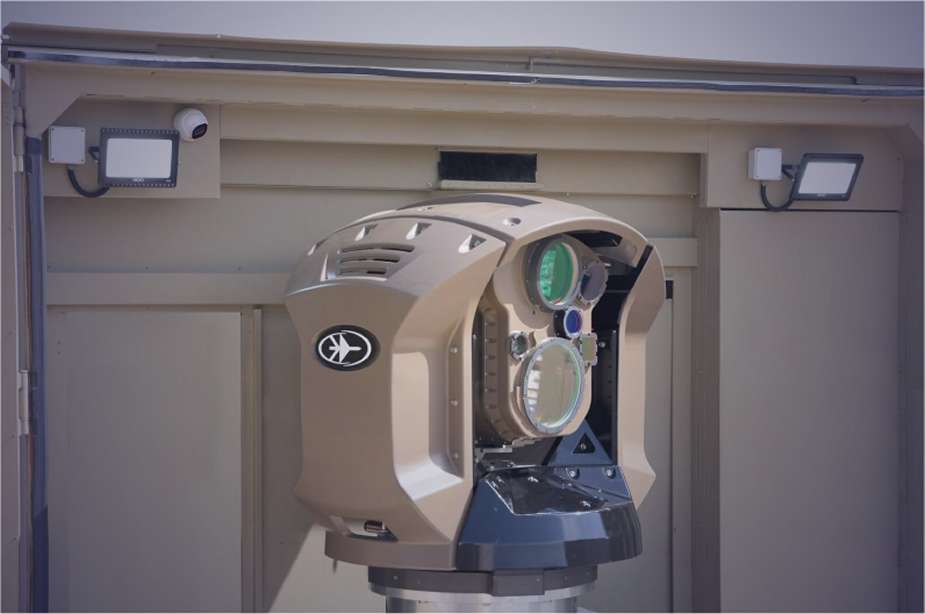Breaking news
Israel tests Iron Beam laser interception system against Hamas rocket attacks.
Israel's advanced rocket interception system based on lasers, known as "Iron Beam," is ready for real-world tests in the southern region of the country. Developed as an evolution of Israel's defense arsenal, Iron Beam uses high-powered lasers to disable incoming rockets, missiles, and drones at a fraction of the cost of existing systems like the Iron Dome.
Follow Army Recognition on Google News at this link

Part of the Iron Beam laser system (Picture source: Rafael Advanced Defense Systems)
The "Iron Beam" system is often considered a revolution in the field of missile defense, not only because of its ability to intercept short-range projectiles but also because of its energy efficiency and discretion. Unlike traditional interception systems that use missiles to shoot down targets, "Iron Beam" employs cutting-edge laser technology. This approach has the advantage of significantly reducing operational costs, as the laser only requires electrical energy to operate. This means that each successful interception costs virtually only the price of the electricity used, which is a fraction of the cost of an interceptor missile from the "Iron Dome" system.
One of the most intriguing aspects of "Iron Beam" is its ability to adapt to various types of threats. The system is designed to be versatile, and capable of intercepting not only rockets and missiles but also drones and other small flying objects. This versatility makes it particularly useful in complex combat environments where various types of threats may be present.
Furthermore, "Iron Beam" is designed to work in synergy with other defense systems, including the "Iron Dome." This integration allows for a more nuanced response to threats, using the most appropriate system for each type of projectile. For example, for longer-range threats, the "Iron Dome" could be activated, while the "Iron Beam" would be used for closer and shorter-range threats.
One of the most interesting aspects of "Iron Beam" is its discretion. The laser is both silent and invisible, allowing for less disruptive defense operations for local populations. This feature is particularly important for Israel, where alarm sirens and explosions can have a significant psychological impact on citizens.
"Iron Beam" represents a significant advancement in anti-missile defense technologies, offering a more economical, versatile, and discreet solution for protecting airspace. Its future development and deployment will be closely monitored.
Following ongoing hostilities with Hamas in the Gaza Strip, the Israeli Ministry of Defense, in collaboration with Rafael Advanced Defense Systems, has decided to position Iron Beam near the Gaza border for live tests against rocket attacks initiated by Hamas. This operational trial will not affect the functionality of the existing Iron Dome system, which will remain active for any detection of launches from Gaza, according to security officials.
Iron Beam is expected to become operational between 2024 and 2025, thanks to recent advancements in laser armament. Rafael, the system's developer, considers Iron Beam as an additional defense mechanism to the Iron Dome, which was also created by the same entities. Both systems are designed to work in tandem, allowing for significant cost savings.
The ongoing conflict between Israel and Hamas in the Gaza Strip provides a critical testing environment for Iron Beam. Over the past three weeks, more than 8,000 rockets and missiles have been fired at Israeli cities, the majority of which have been intercepted by the Iron Dome. "We are at a pivotal moment in the large-scale development of the system," said Dr. Yochail, the chief engineer of the project, who has devoted 17 years to its creation.


























